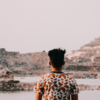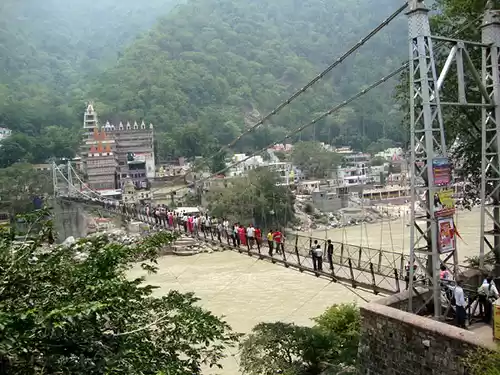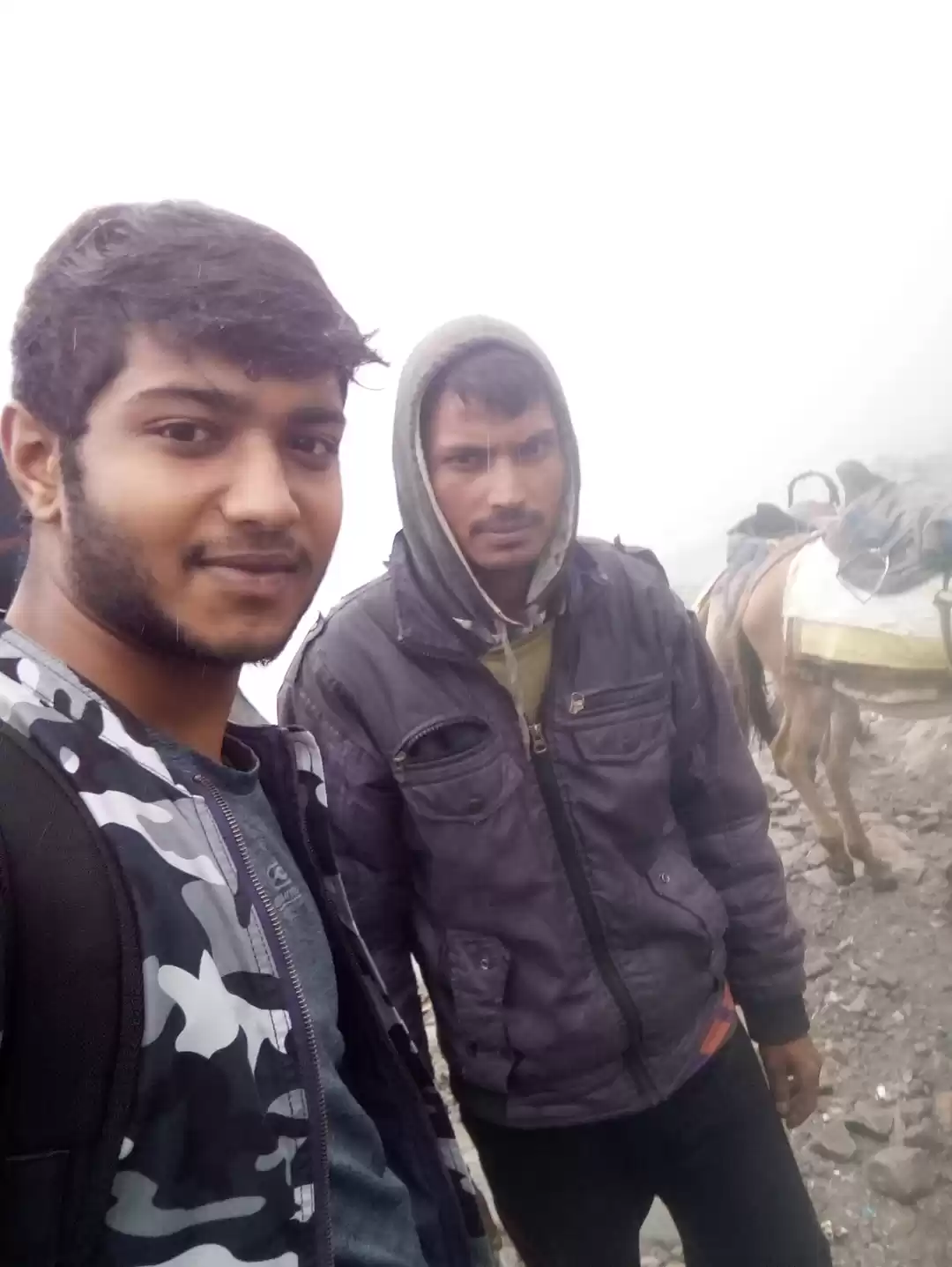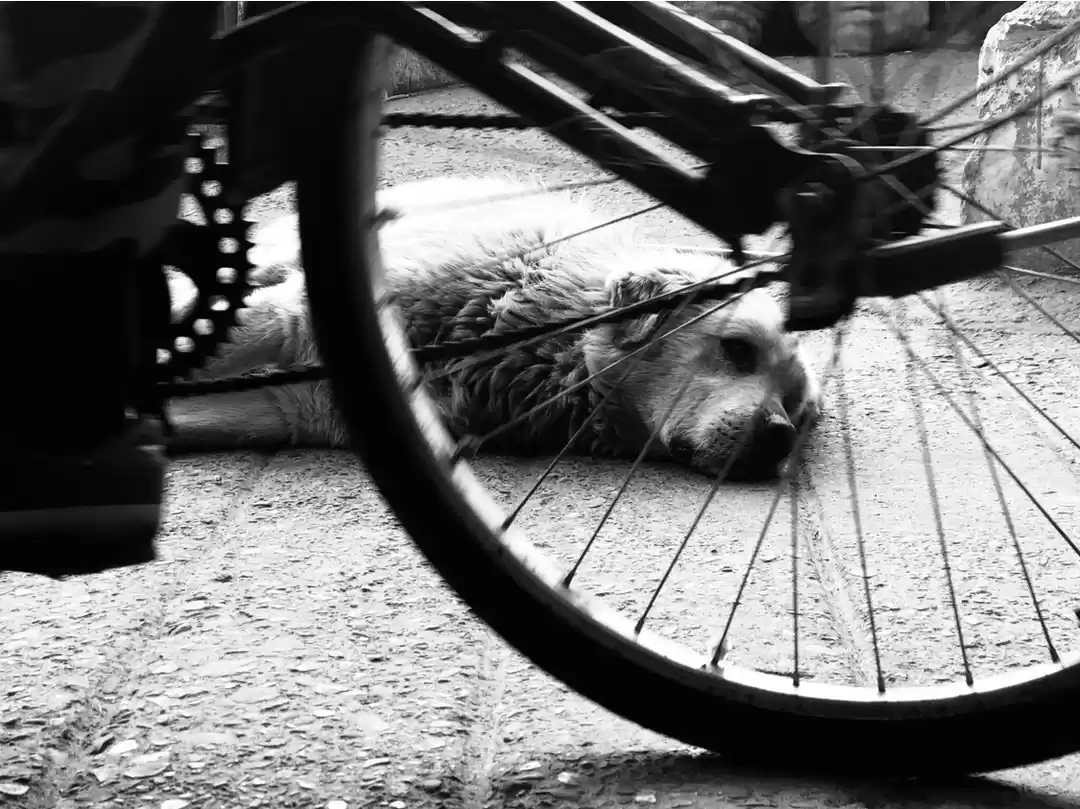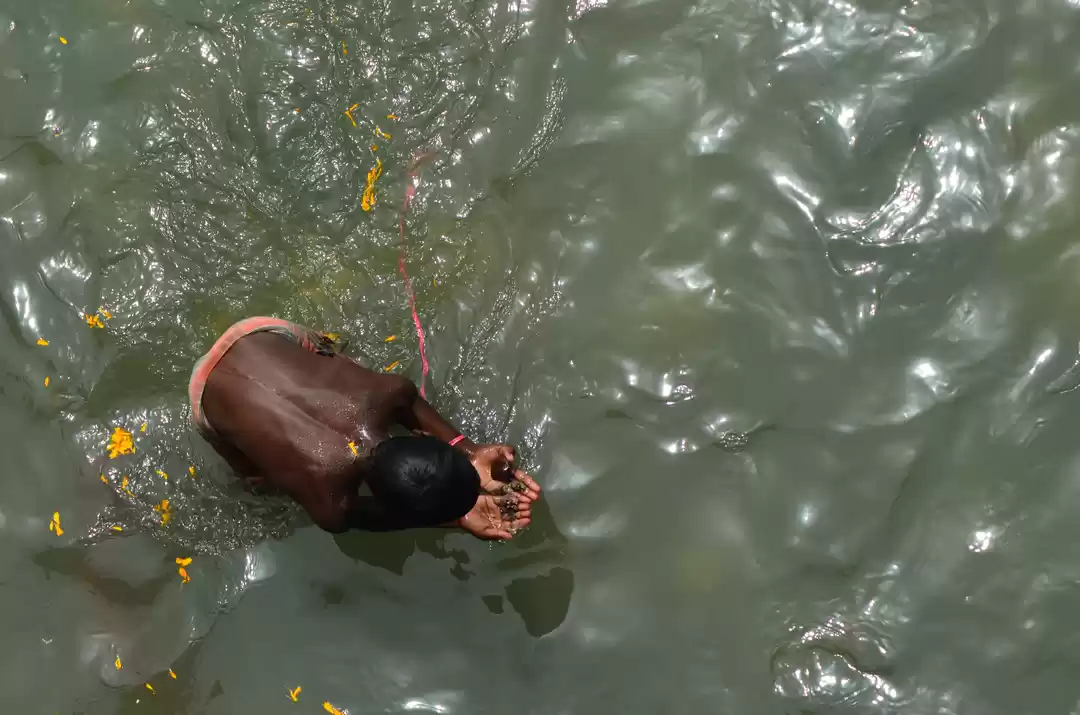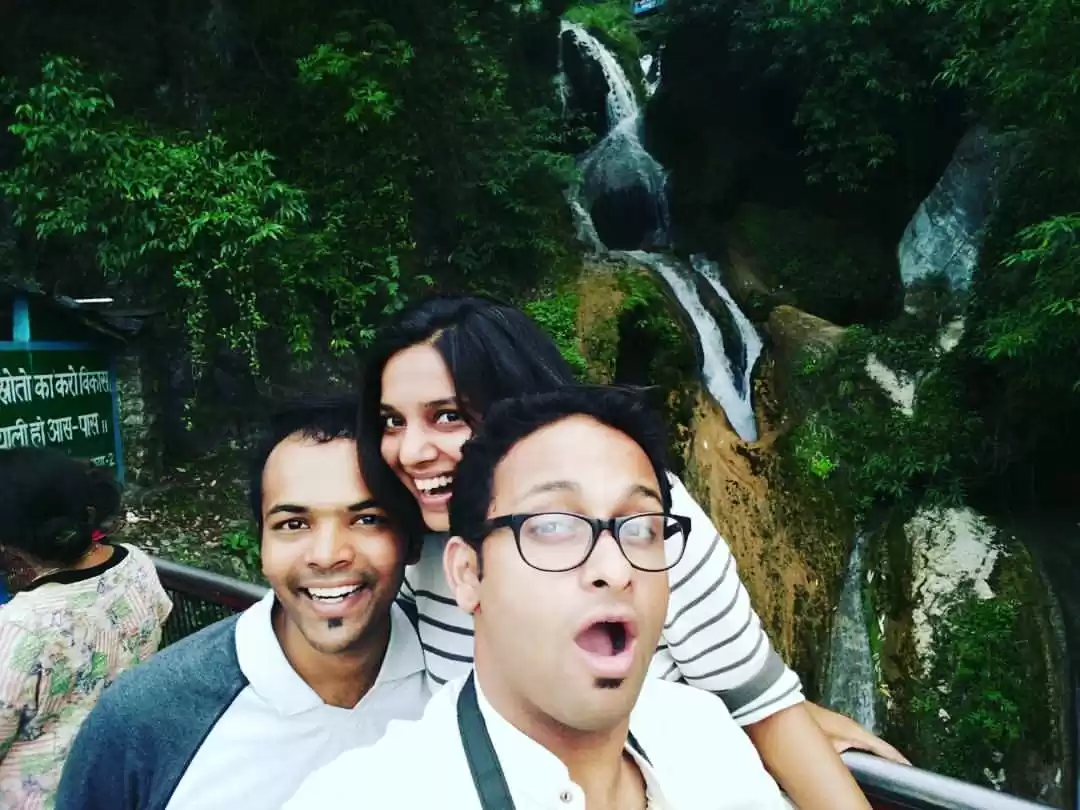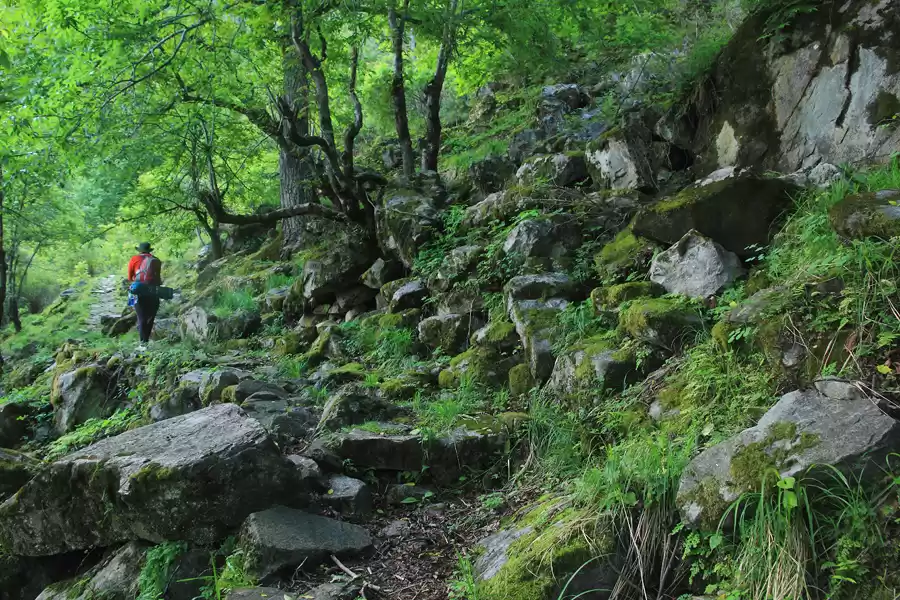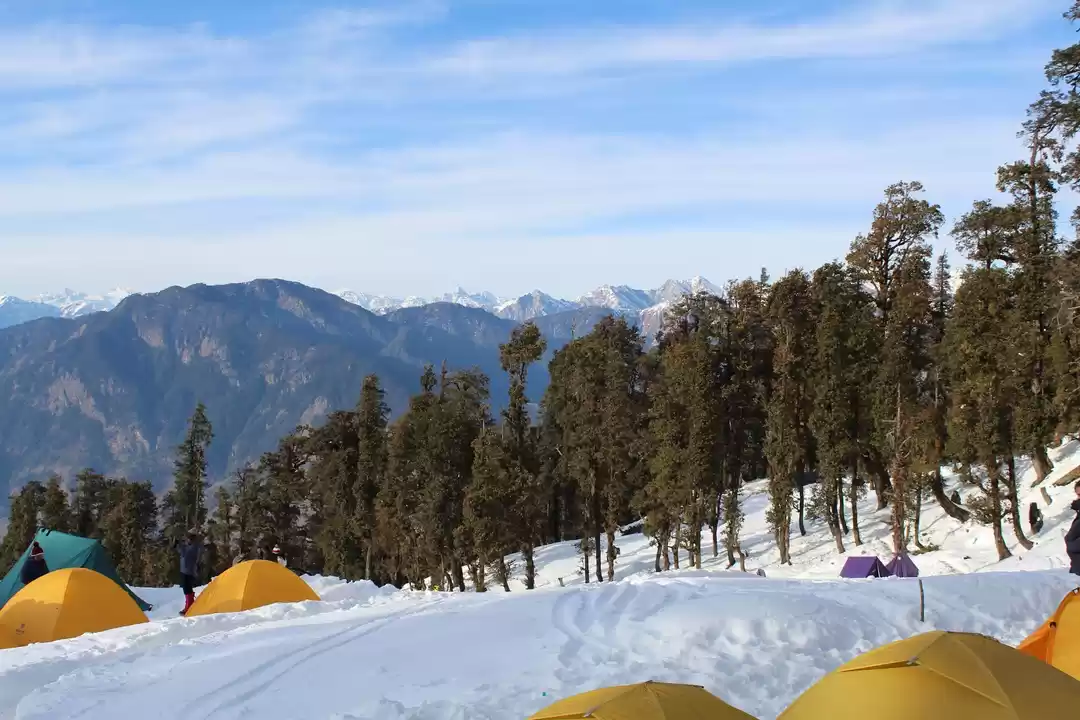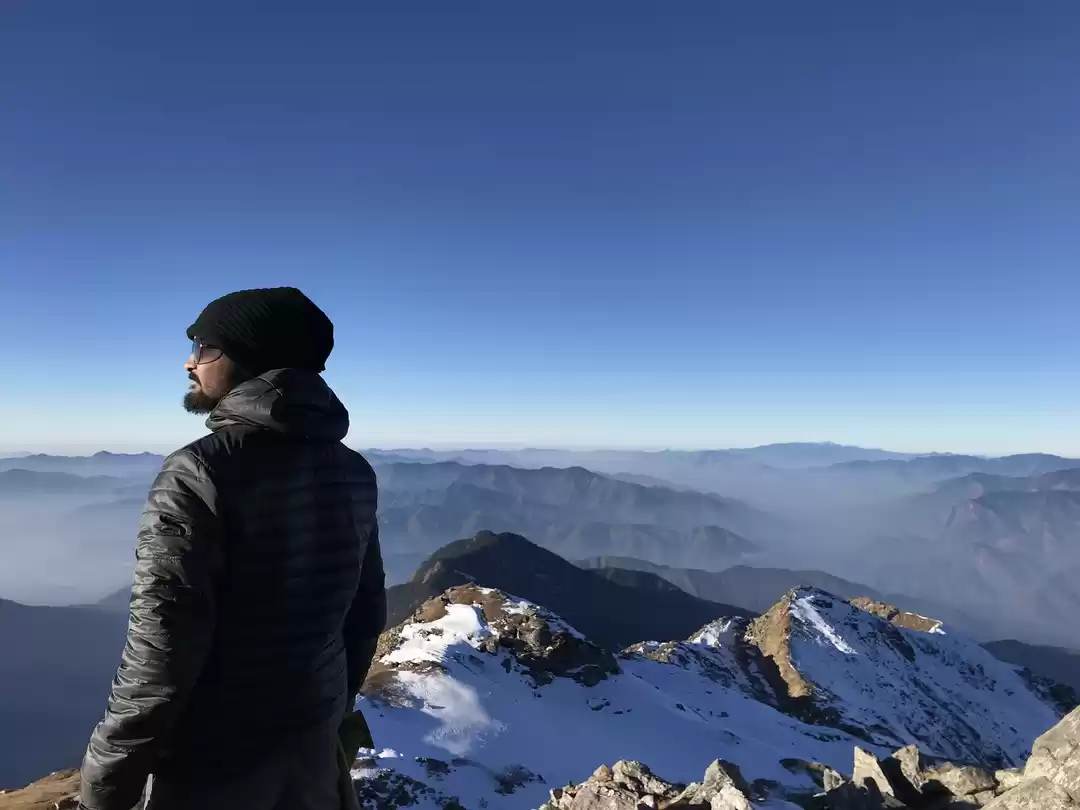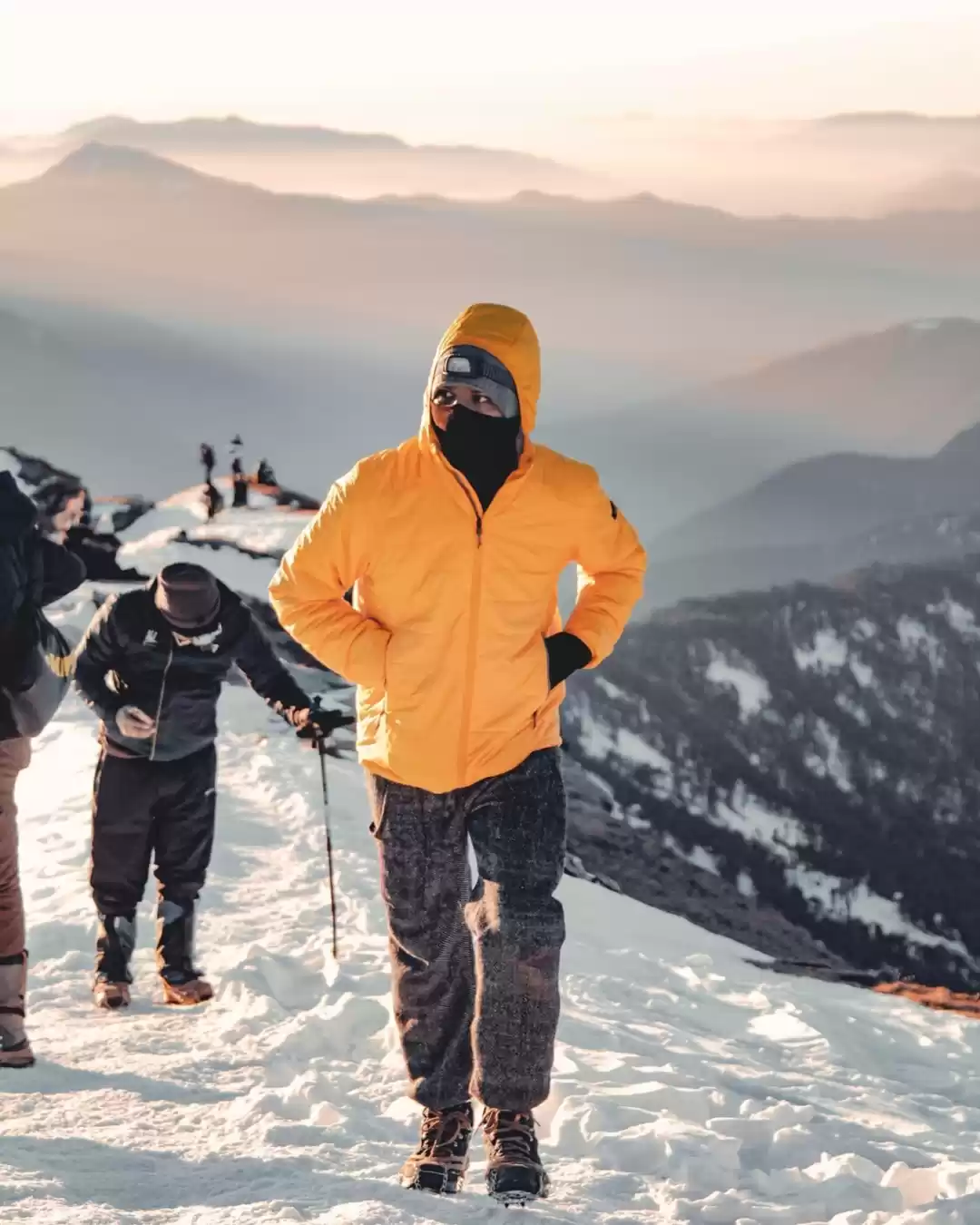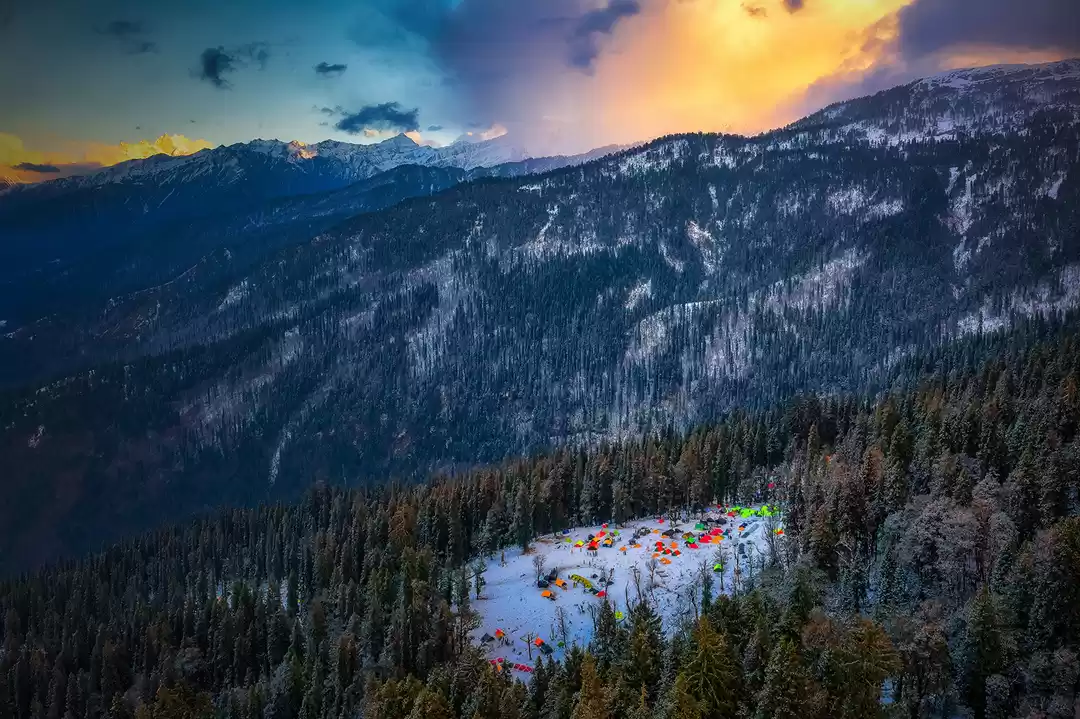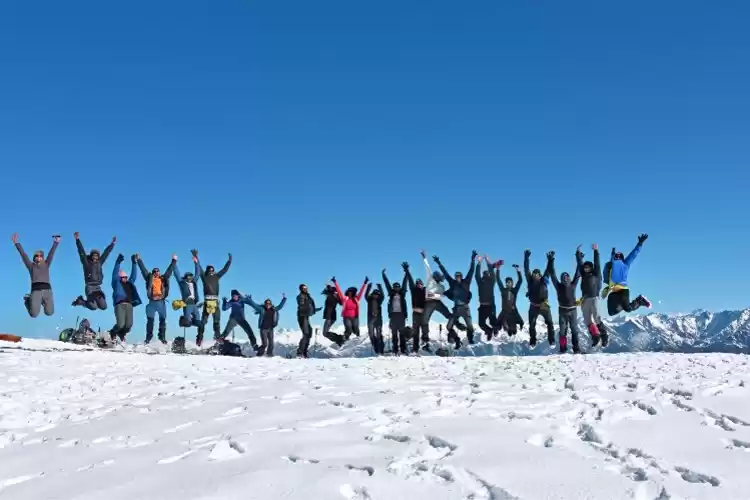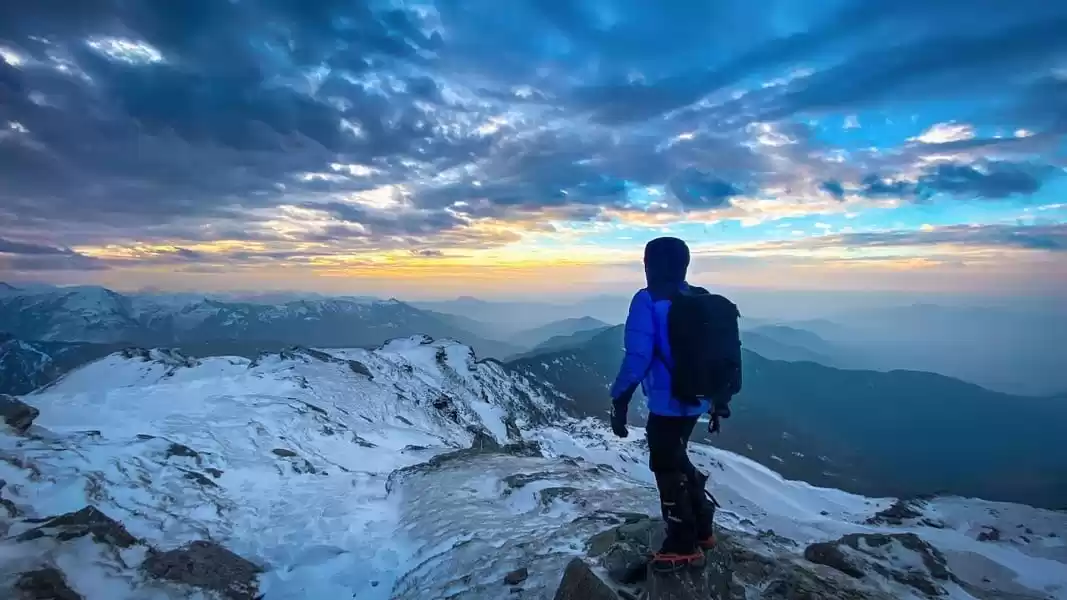Are you looking for a winter trek that offers stunning views, snow-covered trails, rich culture, and adventure? If yes, then Kedarkantha Trek is the perfect choice for you. Kedarkantha Trek is one of the most popular and rewarding treks in Uttarakhand, where you can witness the beauty and diversity of the Garhwal Himalayas. In this article, we will tell you everything you need to know about Kedarkantha Trek, including its location, altitude, duration, difficulty, itinerary, cost, tips, and reviews. By the end of this article, you will be ready to book your trip with Tripoto and experience the winter wonderland of Kedarkantha Trek.
What is Kedarkantha Trek?
Kedarkantha Trek is a circular trek that takes you to the summit of Kedarkantha Peak, which is located in the Govind Wildlife Sanctuary in Uttarakhand. The peak is named after Lord Shiva, who is believed to have meditated here. The trek starts from a small village called Kotgaon and ends at another village called Sankri. The trek covers a total distance of 23 km and can be completed in 4-5 days. The highest point of the trek is the summit of Kedarkantha Peak, which is at an altitude of 3,850 m above sea level. The difficulty level of the trek is moderate, and it is suitable for beginners as well as experienced trekkers.
Why Choose Kedarkantha Trek?
Kedarkantha Trek is a unique and rewarding experience for trekkers because it offers:
1. A summit climb that gives you a 360-degree view of the snow-capped Himalayan peaks, such as Swargarohini, Bandarpoonch, Black Peak, and Ranglana.
2. A snow trail that takes you through beautiful clearings, dense forests, frozen streams, and alpine meadows.
3. A rich culture that lets you interact with the local villagers, learn about their lifestyle, and enjoy their hospitality.
4. An adventure that challenges you physically and mentally, while also giving you a sense of achievement and satisfaction.
Best Time to Visit Kedarkantha Trek
The best time to visit Kedarkantha Trek is from December to April, when the region is covered with snow and offers a winter wonderland experience. During this time, the weather is cold but clear, the temperature ranges from -5°C to 15°C, the snowfall is moderate to heavy, the visibility is good to excellent, and the crowd is moderate to high.
However, if you want to avoid the snow and enjoy a different perspective of Kedarkantha Trek, you can also visit it from May to November, when the region is green and lush. During this time, the weather is warm but pleasant, the temperature ranges from 10°C to 25°C, the rainfall is low to moderate, the visibility is fair to good, and the crowd is low to moderate.
Some of the special events or festivals that take place during certain times of the year are:
Basant Panchami: A festival that marks the arrival of spring and the worship of Goddess Saraswati. It usually falls in late January or early February.
Holi: A festival that celebrates the victory of good over evil and the joy of colors. It usually falls in late February or early March.
Diwali: A festival that commemorates the return of Lord Rama from exile and the triumph of light over darkness. It usually falls in late October or early November.
How to Reach Kedarkantha Trek
Kedarkantha Trek is easily accessible from different cities by road, rail, or air. Here are some of the options for reaching Kedarkantha Trek from different cities:
From Delhi: You can take a flight, train, or bus to Dehradun, which is the nearest major city to Kedarkantha Trek. From Dehradun, you can take a cab or a bus to Kotgaon, which is the starting point of the trek. The distance from Delhi to Dehradun is 250 km and the distance from Dehradun to Kotgaon is 200 km.
From Mumbai: You can take a flight to Dehradun and then follow the same route as mentioned above. The distance from Mumbai to Dehradun is 1,700 km.
From Bangalore: You can take a flight to Dehradun and then follow the same route as mentioned above. The distance from Bangalore to Dehradun is 2,100 km.

Kedarkantha Trek Itinerary
Here is a detailed day-wise description of the trek route, starting from Kotgaon and ending at Sankri. The itinerary includes information on distance, altitude, time, campsites, water sources, landmarks, and difficulty level for each day. It also provides some tips and suggestions for each day.
Day 1: Kotgaon to Juda Ka Talab (4 km, 2,500 m, 4 hours, easy)
On the first day of the trek, you will drive from Dehradun to Kotgaon, which will take about 8 hours. You will pass through some scenic towns and villages, such as Mussoorie, Purola, Mori, and Naitwar. You will reach Kotgaon by afternoon and meet your guide and team members. You will also get a briefing about the trek and do some acclimatization exercises.
After having lunch, you will start your trek from Kotgaon to Juda Ka Talab, which is a beautiful lake surrounded by pine and oak trees. The trail is gradual and easy, and you will enjoy the views of the valley and the river below. You will reach Juda Ka Talab by evening and set up your camp near the lake. You will have dinner and spend the night under the stars.
Day 2: Juda Ka Talab to Kedarkantha Base Camp (4 km, 3,400 m, 3 hours, moderate)
On the second day of the trek, you will trek from Juda Ka Talab to Kedarkantha Base Camp, which is a large clearing at the foot of Kedarkantha Peak. The trail is steep and challenging, but rewarding as well. You will walk through dense forests of pine, oak, birch, and rhododendron. You will also cross some frozen streams and snow patches. You will reach Kedarkantha Base Camp by afternoon and enjoy the panoramic views of the Himalayan peaks. You will set up your camp at a suitable spot and have lunch.
After lunch, you can explore the surroundings, play in the snow, or relax in your tent. You will have dinner and spend the night at Kedarkantha Base Camp.
Day 3: Kedarkantha Base Camp to Kedarkantha Summit to Hargaon (6 km, 3, 850 m, 6 hours, difficult)
On the third day of the trek, you will trek from Kedarkantha Base Camp to Kedarkantha Summit, which is the highest point of the trek. The trail is steep and challenging, but rewarding as well. You will walk through snow-covered slopes and ridges. You will also see some frozen lakes and ponds on the way. You will reach Kedarkantha Summit by early morning and witness the sunrise over the Himalayan peaks. You will feel a sense of achievement and satisfaction as you stand on the top of Kedarkantha Peak. You will spend some time on the summit, taking pictures, enjoying the views, and celebrating your success.
Day 4: Hargaon to Sankri (7 km, 1,900 m, 4 hours, easy)
On the fourth and last day of the trek, you will trek from Hargaon to Sankri, which is the ending point of the trek. The trail is downhill and easy, and you will enjoy the views of the valley and the river below. You will pass through some villages and farms, where you can see the rural life of Uttarakhand. You will reach Sankri by noon and have lunch.
After lunch, you will drive back to Dehradun, which will take about 7 hours. You will reach Dehradun by evening and say goodbye to your guide and team members. You will also share your feedback and reviews with Tripoto. You can either stay in Dehradun and spend a couple of days in Dehradun. Or catch your flight, train, or bus to your destination.
Tips and suggestions:
Pack light and smart for Kedarkantha Trek as you will be carrying your own backpack throughout the trek. You should only pack the essential items that you will need for the trek and avoid any unnecessary items that will add to your weight and space.
Pack your clothes and gear in separate bags or pouches and label them accordingly. This will help you to organize your backpack and find your items easily when you need them.
Pack your clothes and gear according to the weather and season of Kedarkantha Trek. You should check the weather forecast before leaving for the trek and pack accordingly. You should also pack some extra clothes and gear in case of any weather changes or emergencies.
Pack your documents and valuables in a waterproof and secure bag or pouch and keep them with you at all times. You should also make copies of your documents and valuables and keep them in a separate bag or pouch. This will help you in case of any loss or theft of your original documents or valuables.
What to Expect on Kedarkantha Trek
Kedarkantha Trek is a realistic and honest overview of what to expect on the trek. It includes information on the challenges, risks, opportunities, and rewards that are associated with the trek. It also addresses any potential doubts or queries that the reader may have about the trek.
Challenges: Kedarkantha Trek is a moderate to difficult trek that requires physical and mental fitness, stamina, endurance, and determination. Some of the challenges that you may face on the trek are:
Altitude: Kedarkantha Trek takes you to an altitude of 3,850 m above sea level, which can cause altitude sickness or acute mountain sickness (AMS). AMS is a condition that occurs when your body does not get enough oxygen at high altitudes. The symptoms of AMS include headache, nausea, vomiting, dizziness, fatigue, loss of appetite, etc. AMS can be prevented by acclimatizing properly at lower altitudes before ascending higher altitudes. You should also drink plenty of water, avoid alcohol and smoking, eat light and nutritious food, and take rest whenever needed.
Weather: Kedarkantha Trek takes you to a region that experiences cold and unpredictable weather conditions, especially during winter. The weather can change suddenly and cause snowfall, rain, fog, wind, etc. The weather can affect your visibility, mobility, comfort, safety, etc. You should be prepared for any weather changes and carry appropriate clothing and gear for different weather conditions. You should also check the weather forecast before leaving for the trek and follow the instructions of your guide and team members.
Terrain: Kedarkantha Trek takes you to a region that has diverse and challenging terrain, such as snow, rocks, mud, etc. The terrain can affect your speed, balance, stability, traction, etc. You should be careful while walking on different terrains and avoid any slips, falls, injuries, etc. You should also wear sturdy and comfortable footwear that can handle different terrains. You should also use trekking poles or other support if needed.
Risks: Kedarkantha Trek is a safe and secure trek that follows all the safety and security measures and protocols. However, there are some risks that are inherent to any trekking activity and cannot be completely eliminated. Some of the risks that you may face on the trek are:
Injury: Kedarkantha Trek involves walking on uneven and rough surfaces, which can cause injury to your feet, ankles, knees, legs, etc. You may also get injured by falling, slipping, tripping, etc. on the trail. You may also get injured by sharp objects, such as rocks, branches, etc. on the way. You should be cautious and alert while walking on the trail and avoid any injury. You should also carry a first aid kit or medicines for any minor injury or wound. You should also inform your guide or team members if you get injured or feel unwell.
Illness: Kedarkantha Trek involves exposure to cold and harsh weather conditions, which can cause illness to your body. You may suffer from cold, cough, fever, headache, etc. due to the weather. You may also suffer from stomach problems, such as diarrhea, constipation, indigestion, etc. due to the change in food and water. You should take care of your health and hygiene while on the trek and avoid any illness. You should also carry some medicines or remedies for any common illness or ailment. You should also inform your guide or team members if you get sick or feel unwell.
Emergency: Kedarkantha Trek involves traveling to remote and isolated areas, where there may be limited or no access to communication, transportation, medical facilities, etc. in case of an emergency. You may face an emergency situation due to natural calamities, such as landslides, avalanches, floods, etc., or human-made disasters, such as accidents, conflicts, etc. You should be prepared for any emergency situation and follow the emergency plan and protocol of your trek organizer. You should also carry an emergency kit or tools for any emergency situation. You should also inform your guide or team members if you face any emergency situation.
Opportunities: Kedarkantha Trek is a wonderful opportunity for trekkers to explore and experience the beauty and diversity of the Garhwal Himalayas. Some of the opportunities that you can avail on the trek are:
Learning: Kedarkantha Trek is a learning opportunity for trekkers to learn about the geography, history, culture, flora, fauna, etc. of the region. You can learn about the location, altitude, climate, etc. of Kedarkantha Peak and its surroundings. You can learn about the history and significance of Kedarkantha Peak and its name. You can learn about the culture and lifestyle of the local villagers and their traditions and festivals. You can learn about the flora and fauna of the region. You can learn about the different species of plants and animals that inhabit the area. You can also learn some survival skills and techniques from your guide and team members.

Exploring: Kedarkantha Trek is an exploring opportunity for trekkers to explore and discover the beauty and diversity of the Garhwal Himalayas. You can explore the different landscapes and terrains of the region, such as snow, rocks, mud, etc. You can explore the different views and vistas of the region, such as valleys, rivers, lakes, forests, meadows, etc. You can explore the different peaks and ranges of the region, such as Swargarohini, Bandarpoonch, Black Peak, Ranglana, etc. You can also explore the different villages and temples of the region, such as Kotgaon, Sankri, Hargaon, etc.
Experiencing: Kedarkantha Trek is an experiencing opportunity for trekkers to experience and enjoy the beauty and diversity of the Garhwal Himalayas. You can experience the thrill and excitement of trekking on snow-covered trails and reaching the summit of Kedarkantha Peak. You can experience the peace and tranquility of camping near a lake or a stream and sleeping under the stars. You can experience the warmth and hospitality of the local villagers and sharing their food and stories. You can also experience the culture and spirituality of the region and visiting a temple or a festival.
Rewards: Kedarkantha Trek is a rewarding opportunity for trekkers to gain some benefits and advantages from the trek. Some of the rewards that you can get from the trek are:
Fitness: Kedarkantha Trek is a fitness reward for trekkers as it improves your physical and mental health. It improves your cardiovascular system, respiratory system, muscular system, etc. It also improves your stamina, endurance, strength, flexibility, etc. It also reduces your stress, anxiety, depression, etc.
Knowledge: Kedarkantha Trek is a knowledge reward for trekkers as it increases your knowledge and awareness about the geography, history, culture, flora, fauna, etc. of the region. It also increases your knowledge and skills about trekking, camping, survival, etc.
Memories: Kedarkantha Trek is a memory reward for trekkers as it creates some unforgettable memories and moments for you. It creates some memorable sights and sounds of the region, such as sunrise over the Himalayan peaks, snowfall on the trail, birdsong in the forest, etc. It also creates some memorable feelings and emotions for you, such as joy, happiness, pride, gratitude, etc.
Conclusion
Kedarkantha Trek is a complete guide to the winter wonderland of Kedarkantha Trek. It provides you with all the information and guidance that you need to plan and book your trip with Tripoto. It also tells you what to expect on Kedarkantha Trek and how to make the most of it. By reading this article, you will be ready to embark on an amazing winter trek in Uttarakhand.
We hope you enjoyed reading this article and found it useful and informative. If you have any feedback or questions about Kedarkantha Trek or Tripoto, please feel free to leave a comment below or contact us directly. We would love to hear from you and help you with your queries.
Thank you for reading this article and choosing Tripoto as your travel partner. We wish you a happy and safe journey to Kedarkantha Trek!



